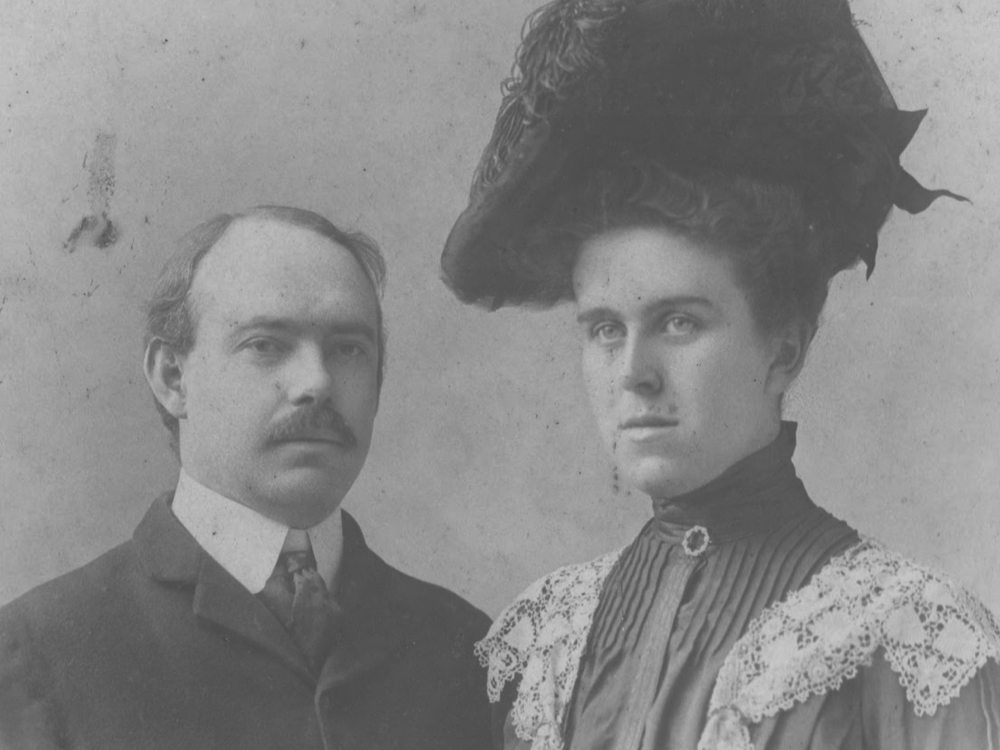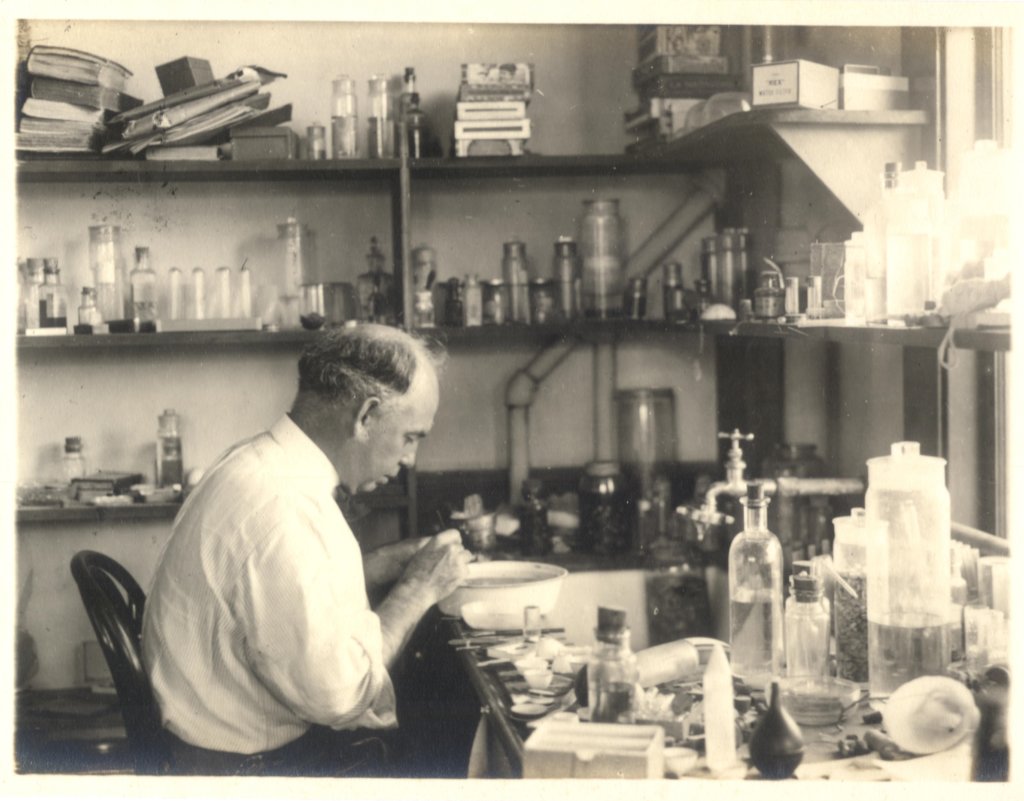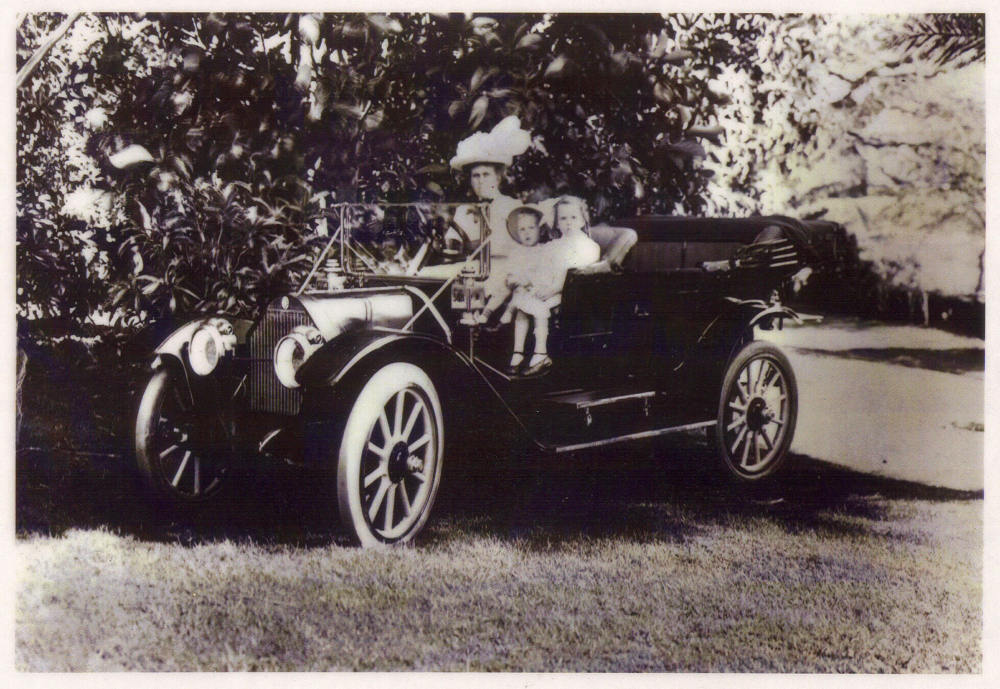Monte & Lila Cooke

From Paintings, Prints, and Drawings of Hawaii from the Sam and Mary Cooke Collection by David Forbes (2016):
Like many men of his generation, Charles Montague Cooke Jr., the builder of the house he named Kūaliʻi in honor of the seventeenth-century Oʻahu chief, was interested in the graphic arts. He formed a collection of several thousand American engravings, etchings, and lithographs, which in the family tradition made their way from his Mānoa home to the print drawers of the Honolulu Museum of Art, generously accompanied by funds for future acquisition.
One of his biographers has written: “In early childhood, Monte Cooke had scientific leanings. He started out by gathering and sorting ferns growing about his home. At eight he announced he was going to be a biologist and gave up ferns for land shells.” This he proceeded to do. He attended Yale, graduated in 1897, and there received his Ph.D. in 1901. In 1898 while on a botanizing trip to Bermuda, he met Eliza “Lila” Lefferts of Brooklyn, and a romance developed. A 1900 letter reported: “Montague seems to have found a fine specimen, surpassing probably everything he has found in his researched in botany and natural history.” Then in a January 25, 1900 letter to his parents, Montague announced: “Lila has accepted me and consequently I am as happy as any man can possibly be” (C.M. Cooke Papers 1860-1909, Hawaiian Mission Houses Archives). They were married in Brooklyn on April 25, 1901. Later that year they were in London, lodging on Russell Square–in close proximity to the British Museum where he was examining the malacology collection. In 1902 the Cookes returned to the islands, and 1903 found them living in a home in the College Hills section of Mānoa Valley, with Montague working at the Bernice Pauahi Bishop Museum.

In 1911 the Cookes hired the architectural firm of Emory and Webb to design a home for them on land that Montague’s parents had given them in 1901 as a wedding present. The property was the location of Kūkaʻōʻō, an ancient Hawaiian heiau. Montague directed the architects to build the home behind the heiau in order to preserve the thousand-year-old site. The home was designed in the Tudor Revival style. The interior was informally furnished, featuring a set of wicker furniture in the living room. The Cookes named the house Kūaliʻi after a famous Oʻahu chief associated with the site. Besides an interest in dairy farming, Monte was a dedicated gardener and at one time there were extensive botanical gardens and an aviary on the site. Many of the trees he planted are still here.
In his professional life, Monte Cooke made significant contributions to the scientific study of shells, establishing the remarkable collection of Pacific land-shells at the Bishop Museum. He organized and led several expeditions to the South Pacific for scientific study, collecting many valuable specimens. Many of the younger scientists he mentored went on to earn national reputations. He was also interested in fine art and in particular, American printmakers. His entire collection of three to four thousand prints was presented to the Honolulu Academy of Arts when the building was constructed and given to the people of Hawaiʻi in 1927 (Kondo and Clench 5).

Besides raising two children, Lila Lefferts Cooke was an energetic social and civil volunteer. She was active in the YWCA, the Honolulu Symphony, and the Honolulu Academy of Arts. A staunch Episcopalian, she played an important role at St. Clement’s Church on Wilder Ave. She attended the Tuesday Toilers meetings for decades and provided the church with major financial support for their educational programs. Mrs. Cooke had a passionate interest in automobiles and is said to have been one of the first woman drivers in Hawaiʻi.